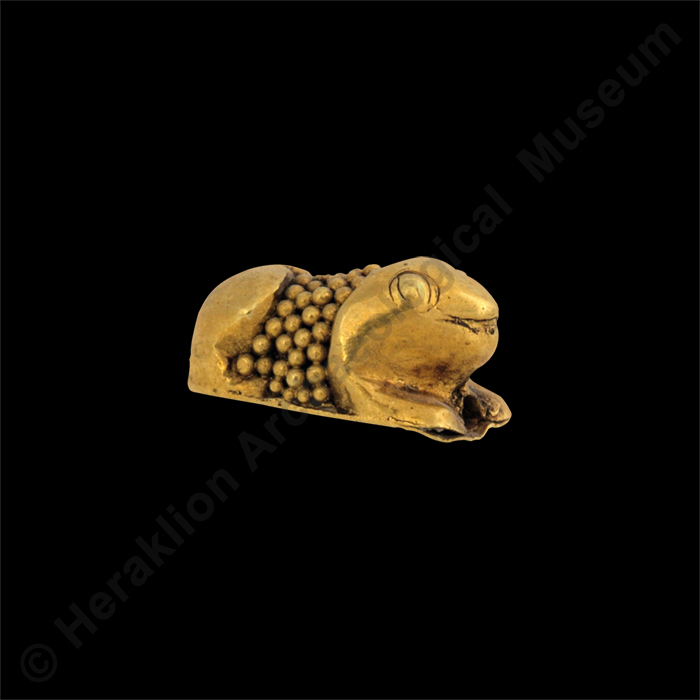The exhibit
Koumasa, Tholos Tomb Β. 2400 - 1800 BC

This microscopic gold pendant in the shape of a crouching frog is thought to be the earliest piece of goldwork carved in the round in Prepalatial Crete. It accompanied a burial in Tholos Tomb B at Koumasa in the Mesara, which was excavated by Stephanos Xanthoudides in the early 20th century. It is clearly meant to be a pendant, as it has a lengthwise hole for a very fine thread. It may have been used as an amulet, like the frog amulets of Pharaonic Egypt, where the frog, as the animal form of the fertility goddess Heqah, symbolised rebirth. This ornament is the work of an exceptionally skilled master craftsman, as the details show. It is decorated using the specialised granulation technique, in which tiny gold balls are made and attached to the very small surface area. As we can see from this ornament and other gold decorative objects on display, Cretan goldsmiths were already highly skilled by the end of the 3rd millennium BC. This was when maritime trade expanded, bringing new valuable raw materials, such as gold and copper, to the island, as well as new ideas and technological practices. Changes in social and political organisation during this period also led to the rise of new ruling groups in the island’s communities. Perhaps owning luxury objects, which are mainly found as grave goods accompanying high-status burials, like this masterpiece, was a means of displaying social status for the ruling groups brought to the fore by the new conditions.













